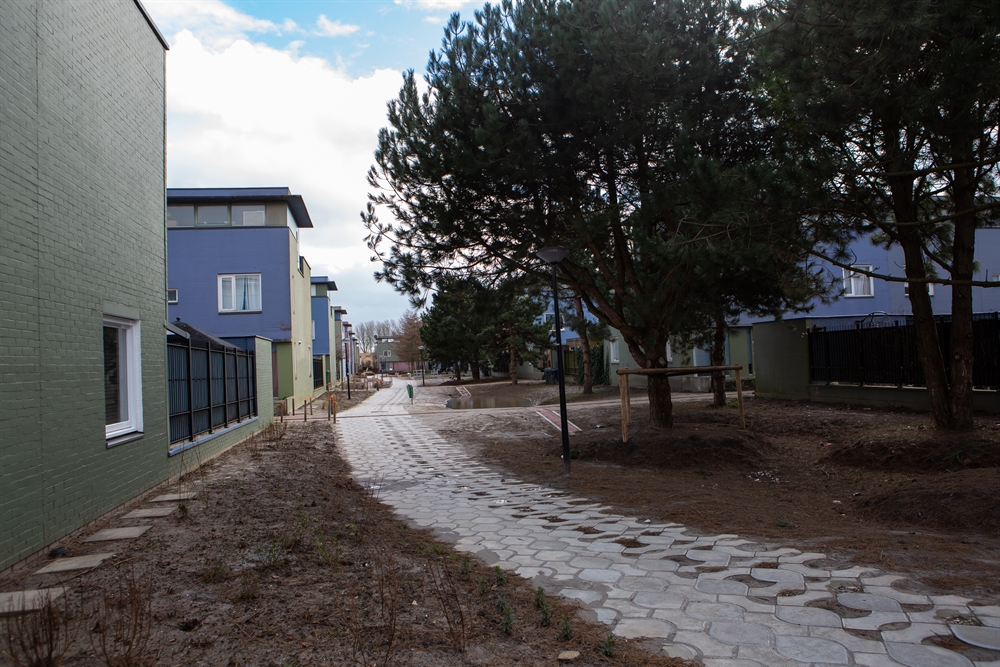Climate-proof testing ground in Almere Pigmenthof street
In the autumn of 2019, the municipality of Almere set up a testing ground, in collaboration with Dusseldorp Infra, Sloop en Milieutechniek; BTL Advies; BTL Realisatie; and Arcadis. The testing ground is located in the Pigmenthof, a street in the Regenboog neighbourhood. The testing ground is intended to explore ways to combat soil subsidence, waterlogging, and heat stress.
Why this testing ground?
The municipality of Almere wants to be prepared for the future and holds vast ambitions regarding climate adaptation. It intends to explore the options that are open in this field. The municipality has set up this testing ground in order to experiment with new solutions to waterlogging, heat stress, and soil subsidence. The Pigmenthof location was chosen because the residents of this street were already struggling with extensive soil subsidence and heat stress. The measures implemented in the testing ground will be monitored regarding these aspects for a period of five years. The expertise and experience that the municipality is gaining with the testing ground can subsequently be applied at other locations in Almere.
What measures to combat waterlogging are being explored?
Before the construction team partners made a design for the testing ground, they first explored the best ways to combat waterlogging in the Pigmenthof:
- They have reviewed the groundwater levels in the Pigmenthof;
- They have calculated the water volume to be collected there;
- They have identified locations for the water to run off to during torrential rain.
With this design, the municipality intends to prevent excessive water on the street during rainfall. To this end, the parties have made a design featuring interconnected sunken sections and subsoil infiltration capacity. The result is that almost all the rainwater can be infiltrated and stored in the Pigmenthof itself.
Which green measures are being explored?
Trees and other greenery can curb heat stress and collect water. The greenery in the testing ground must be robust: it must be capable of withstanding both excessive moisture and prolonged drought. For that reason, perennials and shrubs were selected that are moisture-proof and drought-proof. Most of the trees already present in the Pigmenthof can be retained. At several locations, the municipality has planted new tree species. The trees are located primarily in or between the sunken sections, which maximises their water supply during dry months. The trees need water for evaporation and good growth. The growth and vitality of the trees and plants will be closely monitored for the next five years.
Which measures to combat soil subsidence are being explored?
Underneath a strip of pavement, the parties are exploring which fill materials best curb further soil subsidence. To this end, they are testing several lightweight materials. At the same location, they are simultaneously exploring how to store water.
Special features and lessons to be learned
A special feature of this testing ground is that it involves an area with complex factors. For example, in addition to soil subsidence, the area is also faced with heat stress, drought, and waterlogging. Another special feature is that the testing ground is located in an existing neighbourhood. This makes it more difficult to try out new things, especially because space is limited. Beforehand, many residents were critical of the design and the modifications to the existing greenery. Yet, the residents have taken a positive stance regarding the testing ground: they are keen to provide ideas and assist.
Contact person
Henk Nieboer
Gemeente Almere
hnieboer@almere.nl

